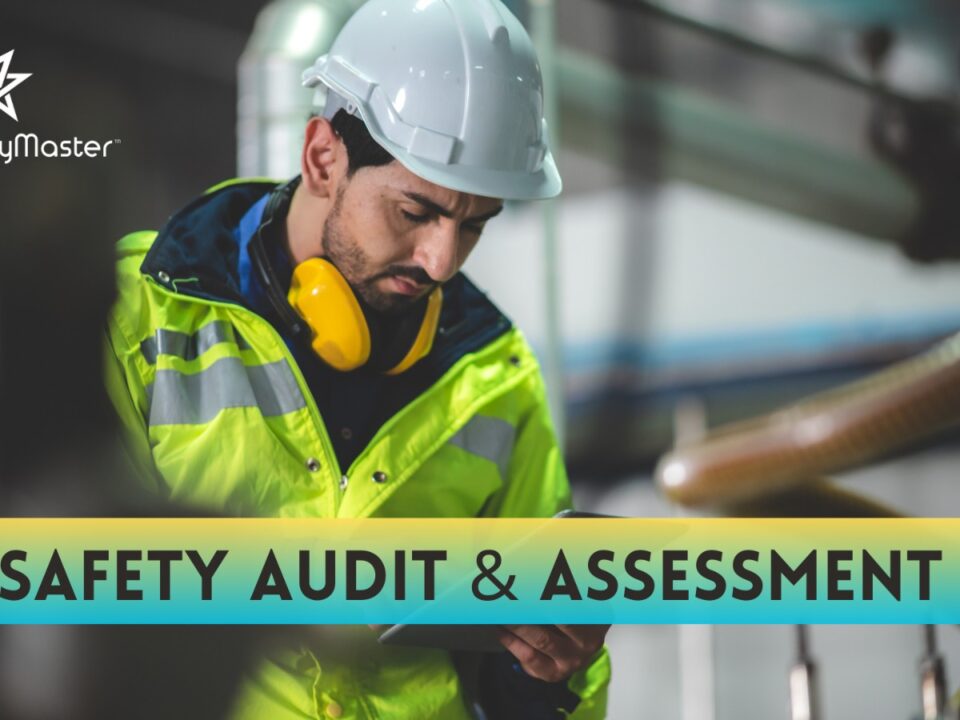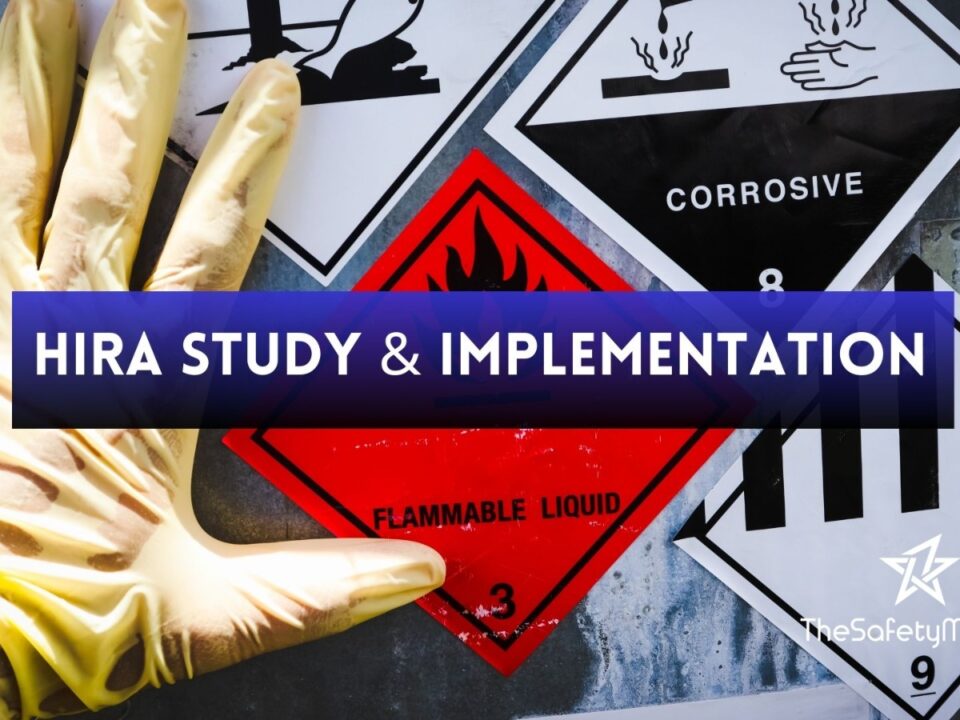Leveraging Technology in Safety Audits: Exploring Modern Approaches with The Safety Master

The Importance of First Aid Training in the Workplace
February 13, 2025
Powerful Steps to Conduct an Effective Safety Audit: The Ultimate Guide
February 15, 2025In today’s rapidly evolving industrial landscape, safety audits have become more critical than ever. With complex processes and advanced machinery, ensuring the safety of workers and facilities is paramount. Modern technology has revolutionized safety audits, making them more efficient, accurate, and comprehensive. One such innovative solution is The Safety Master, which harnesses the power of cutting-edge technology to enhance safety audits across various industries. This article explores how The Safety Master leverages technology in safety audits, focusing on key aspects such as process safety management, fire audits, and process safety management training.
The Role of Technology in Safety Audits
Technology plays a crucial role in enhancing the effectiveness of safety audits. Traditional methods often relied on manual inspections and paper-based checklists, which were time-consuming and prone to human error. With the advent of technology, safety audits have become more streamlined and precise. Digital tools and software enable auditors to collect, analyze, and report data more efficiently, ensuring a thorough assessment of safety practices.
The Safety Master: A Technological Revolution in Safety Audits
The Safety Master is at the forefront of leveraging technology in safety audits. This innovative platform integrates various technological solutions to provide a comprehensive approach to safety management. By utilizing advanced data analytics, real-time monitoring, and automated reporting, The Safety Master ensures that safety audits are conducted with the highest level of accuracy and efficiency.
Key Technological Innovations in Safety Audits
- IoT Sensors and Real-Time Monitoring
The Internet of Things (IoT) has revolutionized safety audits by enabling real-time monitoring of industrial processes. IoT sensors can be strategically placed throughout a facility to continuously collect data on various parameters such as temperature, pressure, and gas levels. This real-time data is then transmitted to a central system, allowing auditors to monitor conditions remotely and identify potential hazards promptly. The Safety Master employs IoT technology to ensure continuous monitoring, which enhances the overall safety of industrial operations.
- Data Analytics and Predictive Maintenance
Data analytics plays a pivotal role in modern safety audits. By analyzing historical and real-time data, The Safety Master can identify patterns and trends that may indicate potential safety issues. Predictive maintenance is one such application where data analytics can predict equipment failures before they occur. This proactive approach helps prevent accidents and reduces downtime, ensuring a safer working environment.
- Digital Checklists and Mobile Applications
The use of digital checklists and mobile applications has streamlined the safety audit process. Auditors can now conduct inspections using tablets or smartphones, eliminating the need for paper-based checklists. Digital checklists are customizable and can be tailored to specific safety standards and regulations. The Safety Master’s mobile application allows auditors to capture data, take photos, and record observations in real-time, ensuring a comprehensive and accurate audit.
- Augmented Reality (AR) and Virtual Reality (VR)
Augmented reality (AR) and virtual reality (VR) are emerging technologies that are transforming safety training and audits. AR can overlay digital information onto the physical environment, providing auditors with real-time information about equipment and processes. VR, on the other hand, offers immersive training experiences, allowing workers to practice safety procedures in a simulated environment. The Safety Master incorporates AR and VR to enhance both training and audits, ensuring that safety standards are met and maintained.
Enhancing Process Safety Management
Process safety management (PSM) is a critical component of safety audits, especially in industries dealing with hazardous materials. The Safety Master utilizes technology to enhance PSM by ensuring compliance with regulatory standards and identifying potential risks. IoT sensors, data analytics, and real-time monitoring are integral to PSM, as they provide valuable insights into process conditions and help prevent accidents.
Comprehensive Fire Audits
Fire audits are essential for assessing the fire safety measures of a facility. Traditional fire audits often involved manual inspections and paper-based documentation. With The Safety Master, fire audits have become more efficient and accurate. IoT sensors can detect smoke, heat, and gas levels, providing real-time data on fire hazards. Digital checklists ensure that all fire safety regulations are met, and data analytics can identify trends and patterns related to fire incidents. The Safety Master’s technology-driven approach ensures a thorough and effective fire audit, enhancing overall fire safety.
Process Safety Management Training
Training is a crucial aspect of maintaining a safe working environment. Process safety management training equips workers with the knowledge and skills needed to handle hazardous materials and processes safely. The Safety Master leverages technology to provide comprehensive training programs. VR simulations allow workers to practice safety procedures in a controlled environment, enhancing their understanding and preparedness. Additionally, digital platforms offer interactive training modules, quizzes, and assessments, ensuring that workers are well-versed in safety protocols.
Benefits of Leveraging Technology in Safety Audits
The integration of technology in safety audits offers numerous benefits:
- Increased Efficiency: Technology streamlines the audit process, reducing the time and effort required for inspections and reporting.
- Enhanced Accuracy: Digital tools and real-time data collection minimize human error, ensuring a more accurate assessment of safety practices.
- Proactive Approach: Predictive analytics and real-time monitoring enable a proactive approach to safety, identifying potential hazards before they escalate.
- Improved Compliance: Digital checklists and automated reporting ensure compliance with regulatory standards and industry best practices.
- Comprehensive Training: AR, VR, and digital platforms provide immersive and interactive training experiences, enhancing workers’ safety knowledge and skills.
Conclusion
In conclusion, the integration of modern technology in safety audits has revolutionized the way safety is managed in industrial settings. The Safety Master is a prime example of how technology can enhance safety audits by leveraging IoT sensors, data analytics, digital checklists, AR, and VR. These innovations not only improve the efficiency and accuracy of safety audits but also ensure a proactive approach to safety management. By embracing technology, industries can create safer working environments, prevent accidents, and comply with regulatory standards. As technology continues to evolve, the future of safety audits looks promising, with even more advanced solutions on the horizon.



